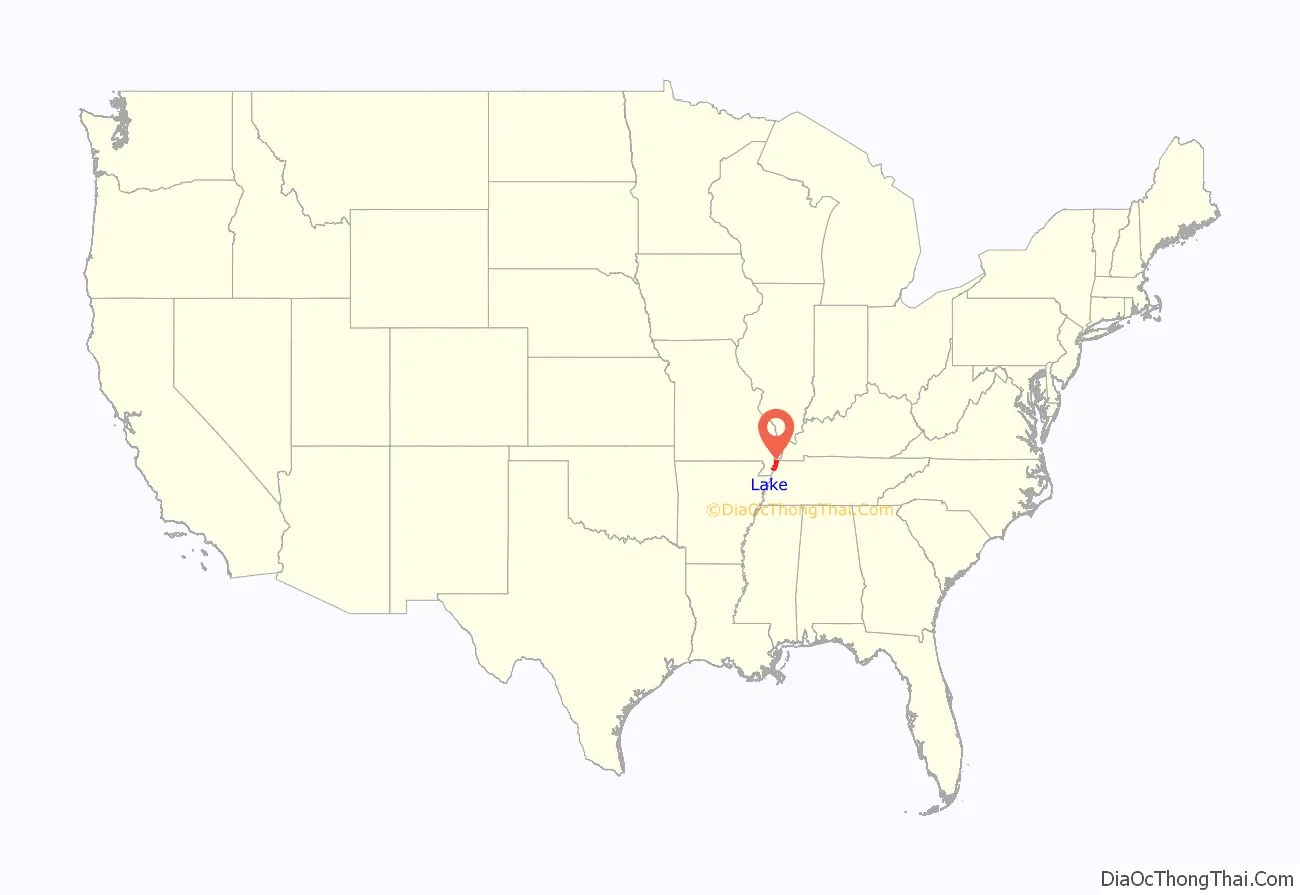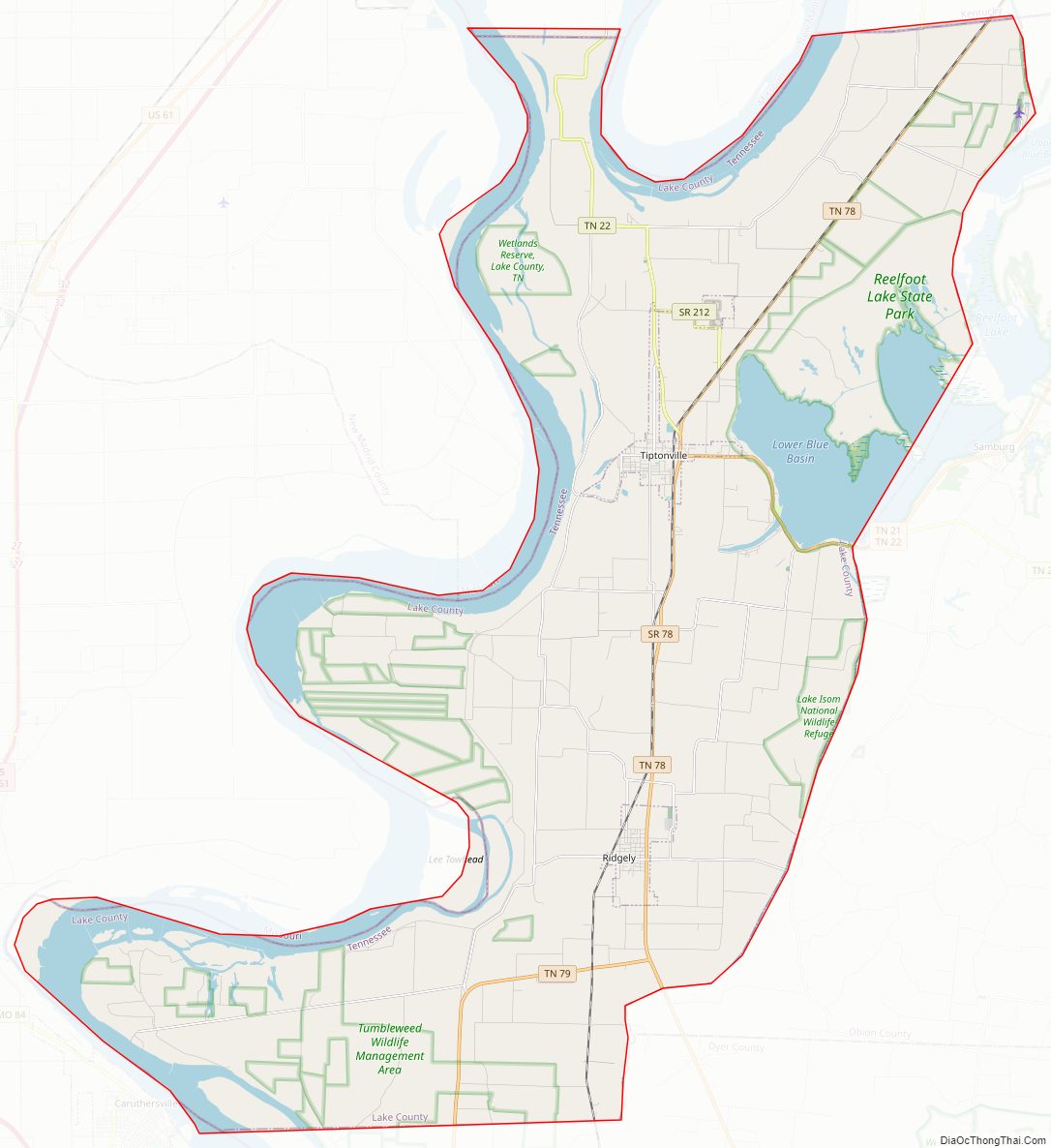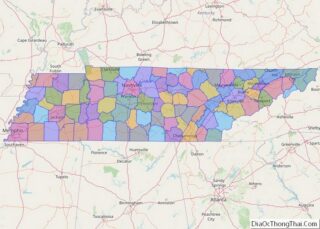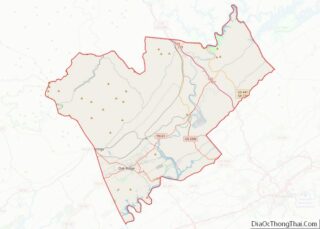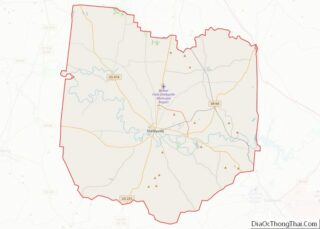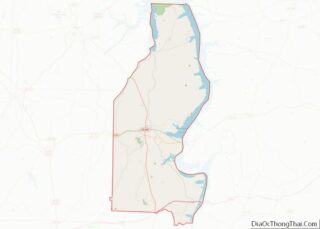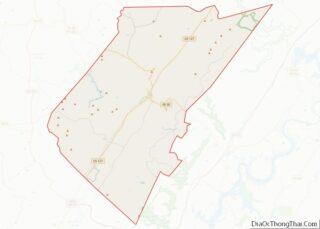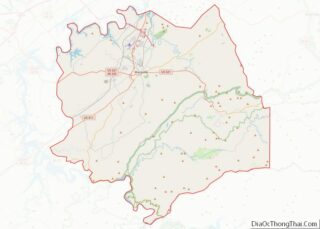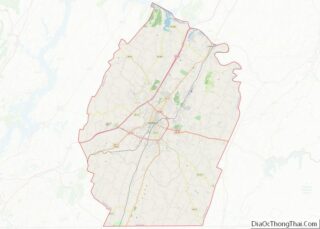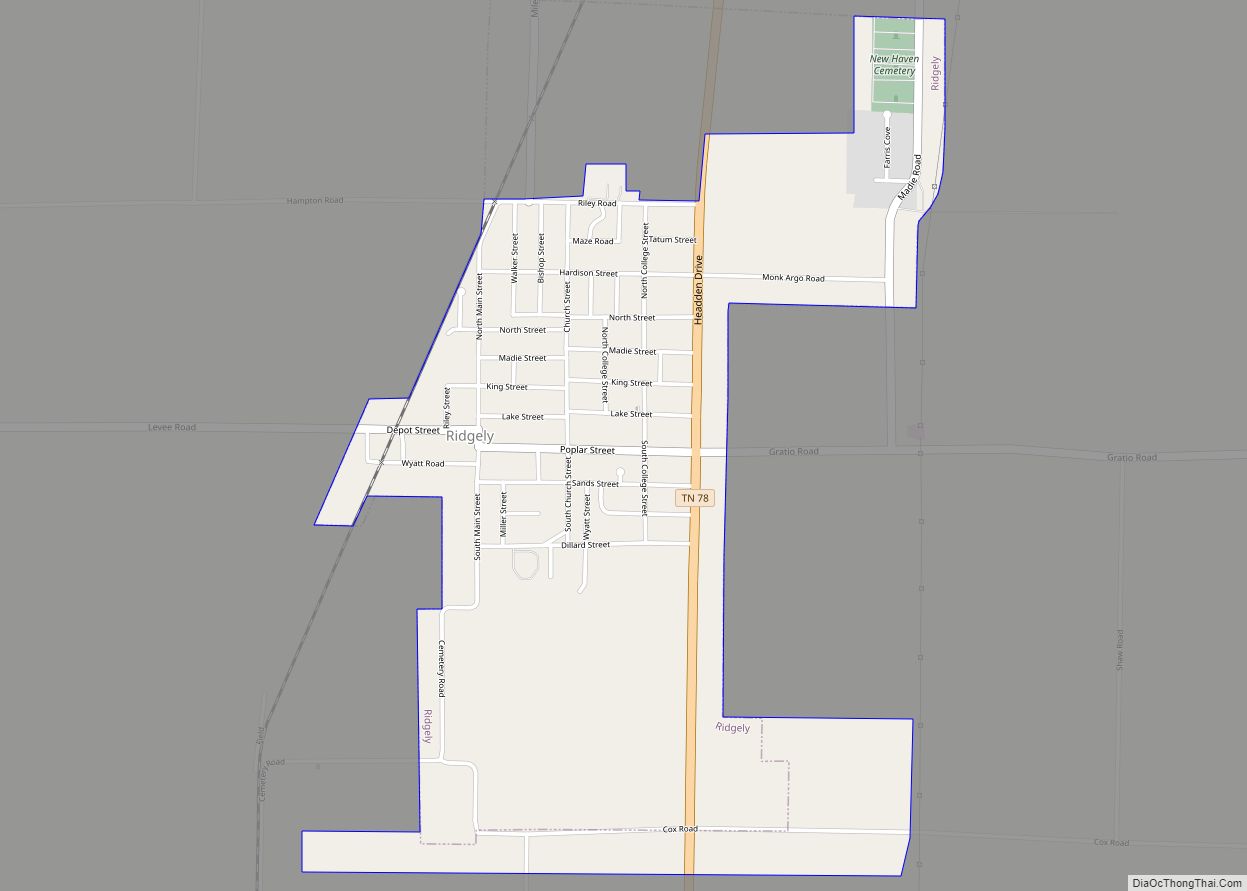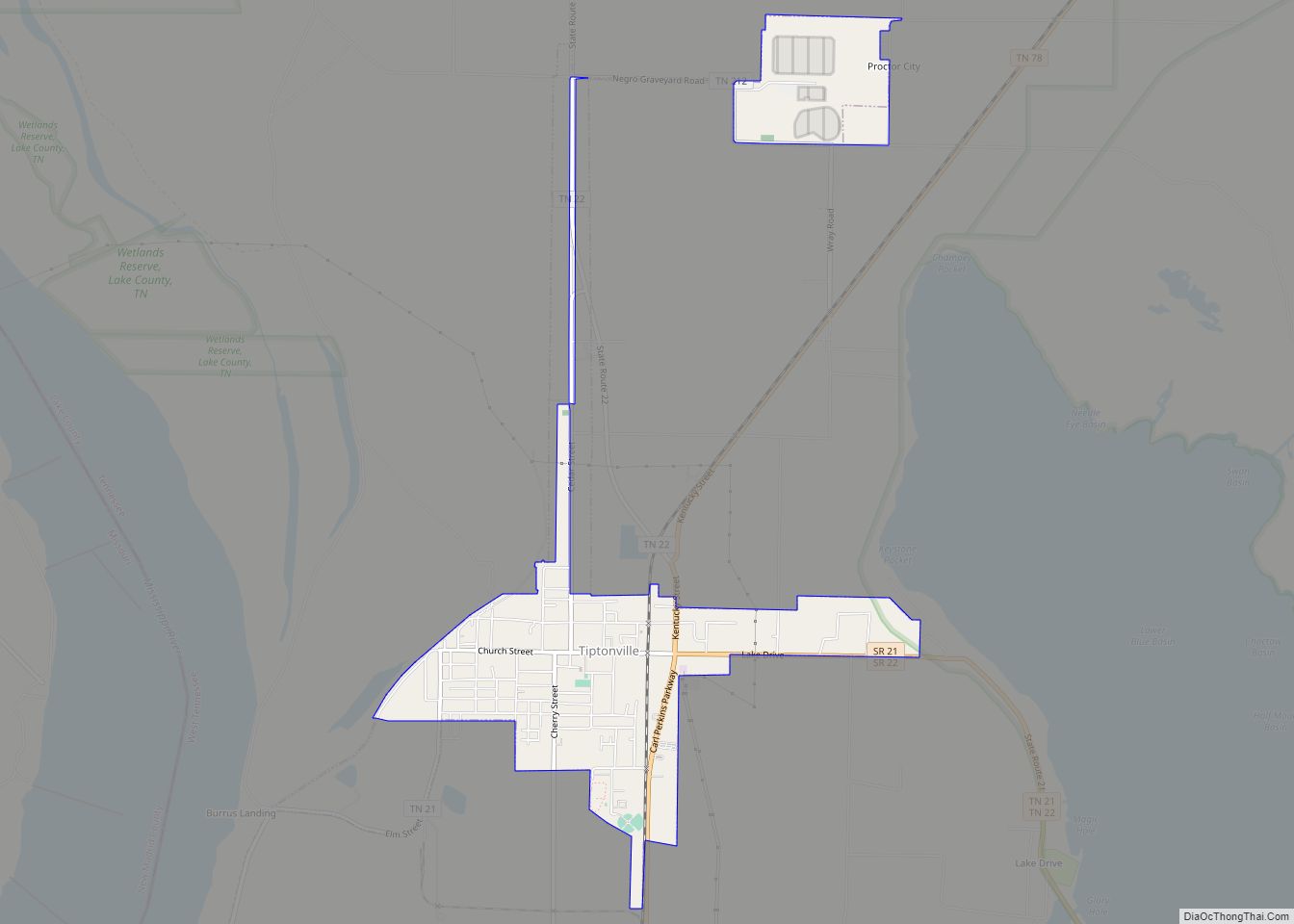Lake County is a county located in the northwest corner of the U.S. state of Tennessee. As of the 2020 census, the population was 7,005, making it the fifth-least populous county in Tennessee. Its county seat is Tiptonville. It shares a border with Kentucky to the north and is separated from Missouri to the west by the Mississippi River.
Reelfoot Lake, formed after the New Madrid earthquakes in the early 19th century, occupies much of the northern part of the county. Issues of control of the lake and the development of cotton plantations in this part of the county resulted in violence by local farmers against corporate owners in 1908; the state called in the militia to suppress night riding. Reelfoot Lake and surrounding property were finally acquired by the state beginning in 1914. It is now within the Reelfoot Lake State Park and preserved for public use. The Northwest Correctional Complex in Tiptonville, a state prison first opened in 1981, can house up to 2,391 male prisoners, a significant share of the county’s population.
| Name: | Lake County |
|---|---|
| FIPS code: | 47-095 |
| State: | Tennessee |
| Founded: | 1870 |
| Named for: | Reelfoot Lake |
| Seat: | Tiptonville |
| Largest town: | Tiptonville |
| Total Area: | 194 sq mi (500 km²) |
| Land Area: | 166 sq mi (430 km²) |
| Total Population: | 7,005 |
| Population Density: | 47/sq mi (18/km²) |
| Time zone: | UTC−6 (Central) |
| Summer Time Zone (DST): | UTC−5 (CDT) |
| Website: | www.lakecountytn.com |
Lake County location map. Where is Lake County?
History
The history of Lake County has been largely defined by Reelfoot Lake, a natural lake created by the New Madrid earthquakes of 1811 and 1812. It is surrounded by wetlands. This territory was originally included in Obion County.
In 1862, during the Civil War, the Battle of Island Number Ten took place in the Mississippi River, just off the shores of Obion County, in territory now part of Lake County.
The county was organized in 1870, during the Reconstruction era. Its residents had long complained about the difficulty of having to traverse swampy areas during seasonal high waters around Reelfoot Lake to reach the county seat, then Troy, Tennessee, located to the east of the lake. After the new Lake County was established, Tiptonville was designated as its county seat.
In 1907 and 1908, a violent conflict took place in Lake and Obion counties, and neighboring Fulton County, Kentucky, which also had frontage on the lake. Private investors bought title to most of the land around the lake, gaining control, and formed the West Tennessee Land Company, to develop the property. In this era, western Tennessee and Kentucky were being developed for cotton culture and the lowlands around the lake were fertile floodplain. They announced plans to drain the lake. A band of local farmers and others who made their living from the lake, organized resistance, becoming known as the “Night Riders of Reelfoot Lake.”
Beginning with the burning of John Carlos Burdick’s fish docks on April 12, 1908, they committed crimes over a period of months, harassing the land company’s employees. In October 1908 they kidnapped two attorneys and lynched one, Quentin Rankin, who was also a shareholder in the land company. The other escaped. Given this attack and murder, Governor Malcolm Patterson personally led the Tennessee National Guard into the area, and arrested hundreds of suspected Night Riders. The Night Riders also rode against African Americans, as they were resisting the increase of blacks in the counties, some of whom had come to work as sharecroppers on newly developed cotton plantations. Since the late 19th century, the white-dominated legislature had passed Jim Crow laws and increasing restrictions on voters.
The state gained title to Reelfoot Lake in 1914 to preserve it for public use, but actions were tied up for some years in court challenges. To prevent private development from restricting its use, in 1925 Governor Austin Peay designated the lake as a hunting and fishing reserve. This was the precedent for the larger area to be preserved as the modern Reelfoot Lake State Park.
From 1877 to 1950, there were 13 lynchings of blacks in Lake County, the third-highest number in the state. Neighboring Obion County had 18 lynchings. These were high rates for counties with relatively small populations; Shelby County had the highest total, 20 lynchings in that period. Most of these murders were committed in the decades around the turn of the century, during the period of heightened violence related to opposition to corporate control of Reelfoot Lake and the introduction of cotton plantations and African-American workers to this area.
Lake County Road Map
Geography
According to the U.S. Census Bureau, the county has a total area of 194 square miles (500 km), of which 166 square miles (430 km) is land and 28 square miles (73 km) (14%) is water. It is the fifth-smallest county in Tennessee by area.
Adjacent counties
- Fulton County, Kentucky (north)
- Obion County (east)
- Dyer County (south)
- Pemiscot County, Missouri (west)
- New Madrid County, Missouri (northwest)
National protected areas
- Lake Isom National Wildlife Refuge
- Reelfoot National Wildlife Refuge (part)
State protected areas
- Reelfoot Lake State Natural Area (part)
- Reelfoot Lake State Park (part)
- Tumbleweed Wildlife Management Area (part)
